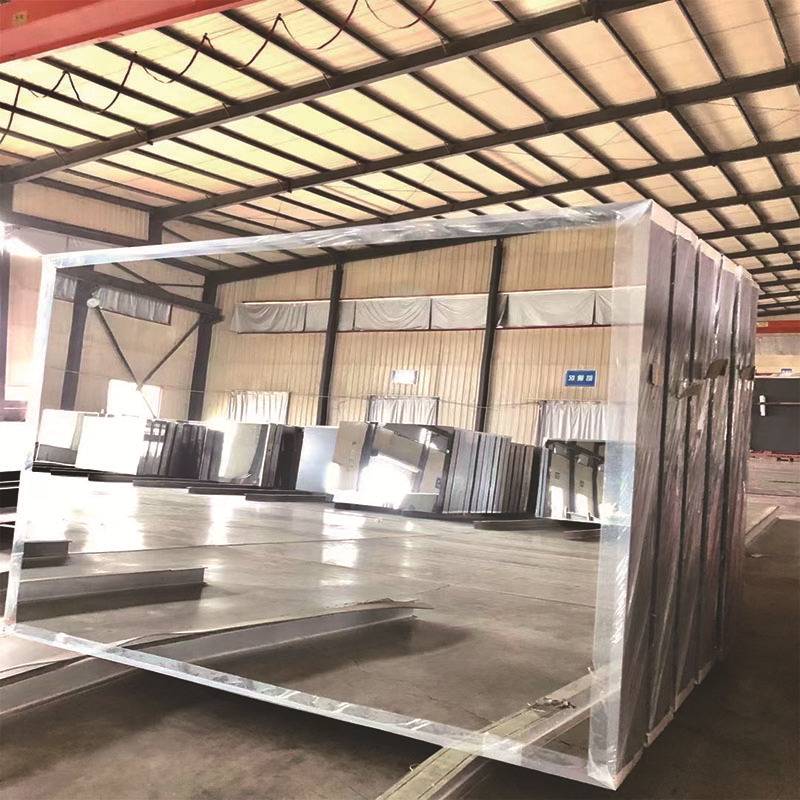Tempered glass, also known as toughened glass, is a type of safety glass that has been treated by controlled thermal processes to increase its strength compared to normal glass. This innovative material has gained immense popularity in various applications, from automotive and construction to home décor and furniture. The production of tempered glass entails a meticulous process involving several key stages to ensure its durability and safety.
The first step in the production of tempered glass begins with selecting high-quality raw materials. Typically, flat glass is used, which is produced through the float glass process. This method involves melting silica sand, soda ash, and other additives in a furnace at a high temperature to form molten glass. Once formed, the molten glass is poured onto a bed of molten tin, creating a smooth and uniform sheet. The glass is then slowly cooled at a controlled rate, a process known as annealing, which relieves internal stresses.
.
The next critical phase is the tempering process itself, which involves heating the glass to a temperature of approximately 620 to 650 degrees Celsius (about 1150 to 1200 degrees Fahrenheit) in a tempering furnace. This process is essential as it alters the internal structure of the glass. During heating, the surface of the glass is brought to a higher temperature than the core, which ultimately results in the formation of compressive stresses on the outer surface and tensile stresses within the glass. This specific tension distribution greatly increases the strength of the glass, making it approximately five to ten times more durable than untreated glass.
tempered glass production
Once the glass reaches the desired temperature, it is rapidly cooled in a process known as quenching. Air jets blow cool air onto the glass, quickly cooling the outer layers while the core remains hot for a moment longer. This rapid temperature drop solidifies the glass and locks in the stresses created during heating. The quenching phase is vital; any irregularities in cooling can lead to weak spots, which could cause the glass to shatter unexpectedly.
After cooling, the tempered glass undergoes rigorous quality control measures. Each sheet is examined for defects such as bubbles, ripples, and dimensional accuracy. Only the sheets that meet strict safety standards are approved for further processing or shipment.
Tempered glass is widely used in a variety of settings due to its safety features. When broken, it shatters into small, blunt pieces rather than sharp shards, reducing the risk of injury. Consequently, it is commonly utilized in automotive windows, shower doors, glass doors, and facades.
In conclusion, the production of tempered glass is a highly technical procedure that involves careful attention to each step, from the selection of materials to the final cooling and quality checks. The advancements in tempered glass technology have not only enhanced safety standards but also expanded its applications across various industries, making it an essential product in modern manufacturing.
 Afrikaans
Afrikaans  Albanian
Albanian  Amharic
Amharic  Arabic
Arabic  Armenian
Armenian  Azerbaijani
Azerbaijani  Basque
Basque  Belarusian
Belarusian  Bengali
Bengali  Bosnian
Bosnian  Bulgarian
Bulgarian  Catalan
Catalan  Cebuano
Cebuano  Corsican
Corsican  Croatian
Croatian  Czech
Czech  Danish
Danish  Dutch
Dutch  English
English  Esperanto
Esperanto  Estonian
Estonian  Finnish
Finnish  French
French  Frisian
Frisian  Galician
Galician  Georgian
Georgian  German
German  Greek
Greek  Gujarati
Gujarati  Haitian Creole
Haitian Creole  hausa
hausa  hawaiian
hawaiian  Hebrew
Hebrew  Hindi
Hindi  Miao
Miao  Hungarian
Hungarian  Icelandic
Icelandic  igbo
igbo  Indonesian
Indonesian  irish
irish  Italian
Italian  Japanese
Japanese  Javanese
Javanese  Kannada
Kannada  kazakh
kazakh  Khmer
Khmer  Rwandese
Rwandese  Korean
Korean  Kurdish
Kurdish  Kyrgyz
Kyrgyz  Lao
Lao  Latin
Latin  Latvian
Latvian  Lithuanian
Lithuanian  Luxembourgish
Luxembourgish  Macedonian
Macedonian  Malgashi
Malgashi  Malay
Malay  Malayalam
Malayalam  Maltese
Maltese  Maori
Maori  Marathi
Marathi  Mongolian
Mongolian  Myanmar
Myanmar  Nepali
Nepali  Norwegian
Norwegian  Norwegian
Norwegian  Occitan
Occitan  Pashto
Pashto  Persian
Persian  Polish
Polish  Portuguese
Portuguese  Punjabi
Punjabi  Romanian
Romanian  Russian
Russian  Samoan
Samoan  Scottish Gaelic
Scottish Gaelic  Serbian
Serbian  Sesotho
Sesotho  Shona
Shona  Sindhi
Sindhi  Sinhala
Sinhala  Slovak
Slovak  Slovenian
Slovenian  Somali
Somali  Spanish
Spanish  Sundanese
Sundanese  Swahili
Swahili  Swedish
Swedish  Tagalog
Tagalog  Tajik
Tajik  Tamil
Tamil  Tatar
Tatar  Telugu
Telugu  Thai
Thai  Turkish
Turkish  Turkmen
Turkmen  Ukrainian
Ukrainian  Urdu
Urdu  Uighur
Uighur  Uzbek
Uzbek  Vietnamese
Vietnamese  Welsh
Welsh  Bantu
Bantu  Yiddish
Yiddish  Yoruba
Yoruba  Zulu
Zulu 

